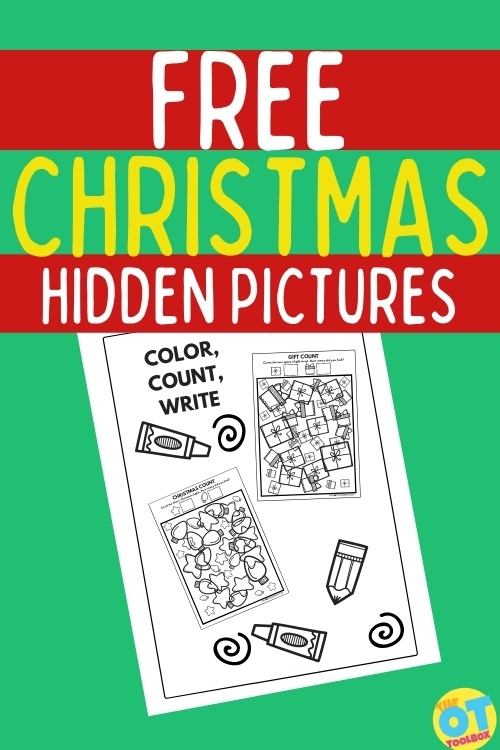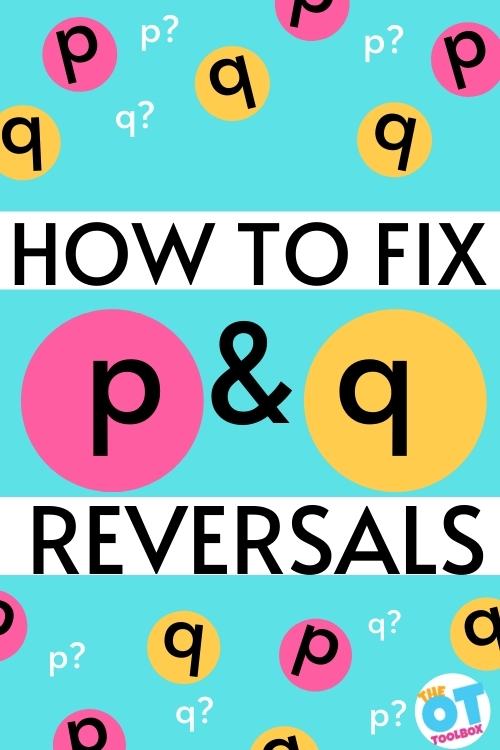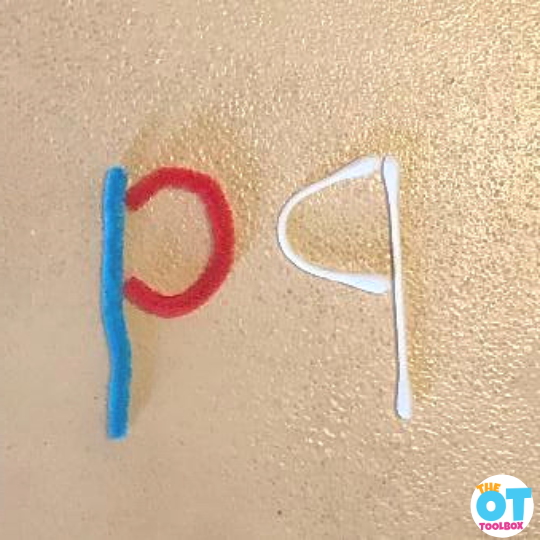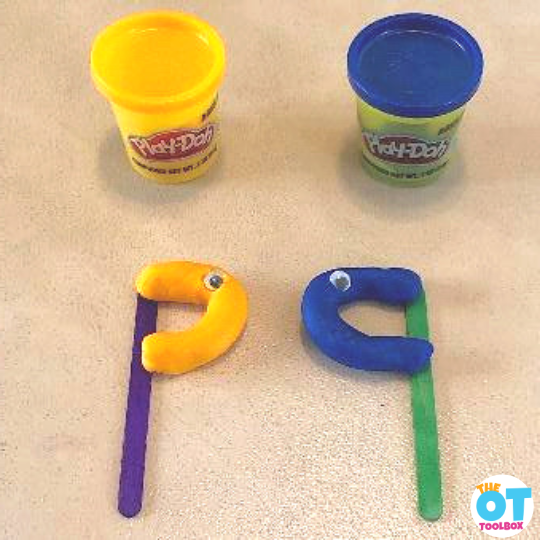Are you looking for a Christmas hidden picture worksheet that doubles as a visual figure ground activity? This Christmas worksheet PDF can be used with students to also address fine motor skills and coloring? Christmas Color and Count is a printable hidden picture printable PDF 2 page resource that will help you address these skills with your students.

Christmas Worksheet PDF: Hidden Pictures
This Christmas hidden picture resource includes 2 printable PDF pages to use with your students during the holidays. The first page has Christmas lights and stars and the second page has 2 different types of gifts.
These printable hidden picture PDFs work on several areas over the holiday season…when kids might not want to work on difficult skill areas. A festive and fun themed activity can help address the underlying areas that impact handwriting, reading, and other visual processing tasks.
How do Hidden Picture Worksheets Help?
Hidden picture worksheets can address many areas that impact function. Let’s take look at all the ways to use this free hidden picture puzzle in therapy”
These worksheets target the visual perceptual skill of visual figure ground. You will also be able to use these worksheets to work on fine motor skills at the same time while finding and coloring the Christmas stars and holiday lights.
Visual Figure Ground Skills- First, let’s look at the visual perceptual skill of visual figure ground. Visual figure ground is the ability to differentiate or pick out an object from a busy background. This skill is essential for supporting the occupations of students in school, from reading text to finding an item in a cluttered desk.
Students use their visual figure ground skills to be able to differentiate words in a book, when copying information from the board, or when looking for something in their backpack.
You could easily use these Christmas Color and Count worksheets paired with other therapy activities to support visual figure ground skills. An important function of visual figure ground is the ability to scan the environment and find the important visual information.
More ideas using the Christmas Hidden Picture
There are more ways to use this Christmas Printable PDF in a variety of therapy activities to incorporate gross motor skills, fine motor skills, coordination, and more…
Use the Christmas Hidden Picture Printable PDF in an I Spy Game- It would be fun to extend this activity to include a scavenger hunt or I Spy Game in your therapy space, either as a warm up activity or as a game to end your session.
- Hide stars or an image of Christmas lights around your space.
- You could ask your students to collect the stars or play I Spy with the images of colored Christmas lights.
Other fun games to address visual figure ground include (Amazon affiliate links) Spot It or I Spy Board Game.
Visual Discrimination Activity- Once you have completed a scavenger hunt or other warm up activity and your students are ready to move on, you can begin by having them look at the pictures at the top of the page.
- Ask them to identify and describe the key features of the objects they will count. For example, the star has angles and the Christmas lights are rounded.
- Ask them to describe the differences between how the 2 gifts look on the second page.
Executive Function Activity- Next, ask your students how they plan to start this activity.
This helps with executive functioning and organization.
- Will they find all of one item and then move to the next?
- Will they start at the top and scan in a left to right manner?
- Asking your students to verbalize their plan will help you understand their organizational strategies and how you may best support their executive functioning.
Visual Scanning Activity- Now, your students are ready to scan and color each shape.
Coloring is a great way to develop fine motor strength and endurance. Coloring is a skill that needs to be taught to support the fine motor development of students. Coloring is a skill that requires hand strength.
Often children with decreased hand strength dislike coloring because they do not have the endurance to complete the task. If you have students who struggle with coloring try offering alternatives to crayons, and then work your way up using crayons or colored pencils.
Often students who have difficulty with the fine motor components of coloring prefer using markers. Markers provide less resistance and for many students they provide more visual interest. Using markers to increase visual attention and motivation for coloring is a great tool for students struggling to build fine motor and visual skills.
For students who may struggle with coloring, think of ways to make it more fun and interesting for them. Here are some ideas:
Christmas Hidden Picture and Strengthening Activity- For students who need additional strengthening opportunities, think about how you can challenge their postural strength and upper body stability.
Other ways to incorporate strengthening into this activity:
- Tape the worksheets to the wall at eye level which will address shoulder strength and stability
- You could also tape the worksheets under the table and have your students work while lying on their back. This a fun and different way to work on fine motor strengthening!
- Find some floor space and have the students lie prone, propped up on elbows while coloring. This position will help strengthen their postural muscles and increase shoulder stability.
- Use a large therapy ball instead of a chair to challenge postural strength while coloring at the table.
For students who avoid or dislike coloring, incorporating different positions into your session may help them start and stay engaged, building not only their fine motor skills, but also strengthening their visual attention.
Free Christmas Hidden Picture Worksheet PDF
Christmas Color and Count is a great activity for building important visual figure ground skills and strengthening fine motor endurance at the same time!

Katherine Cook is an occupational therapist with 20 years experience primarily working in schools with students from preschool through Grade 12. Katherine graduated from Boston University in 2001 and completed her Master’s degree and Certificate of Advanced Graduate Study at Tufts University in 2010. Katherine’s school based experience includes working in integrated preschool programs, supporting students in the inclusion setting, as well as program development and providing consultation to students in substantially separate programs. Katherine has a passion for fostering the play skills of children and supporting their occupations in school.






